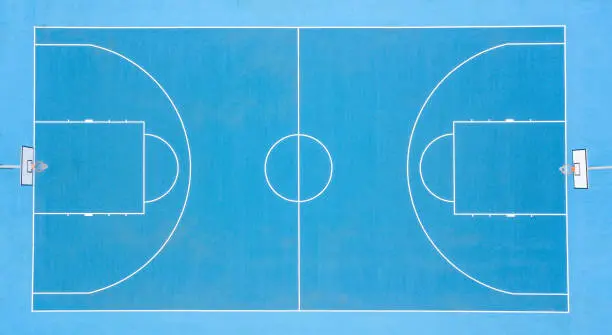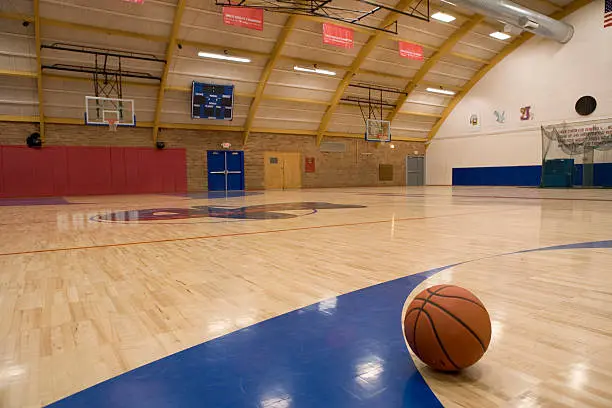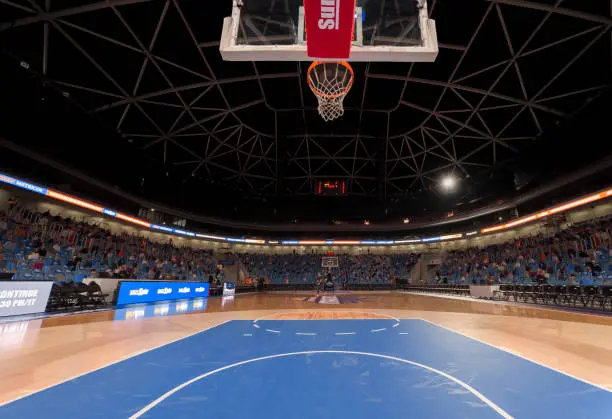Fastest Three Quarter Sprints in NBA Combine
The NBA combine, officially named the NBA Draft Combine, is one of the best and most watched events for NBA coaches, general managers, scouts, and basketball fans. Featuring some of the best collegiate basketball athletes, the combine is a multi-day event which showcases an individual players abilities and measurements.
Similar to the more famous NFL draft combine, the NBA combine is meant to show individual capabilities and athletic performance in a controlled setting. And within that setting, the three quarter sprint stands out as being able to better determine an individual players ability to run up and down a basketball court.
Below, we are going to review the fastest three quarter sprints in the NBA combine and discuss just why the three quarter sprint is such an important factor in assessing an individual basketball players abilities to perform well on the court.

What is the NBA Draft Combine?
The NBA Draft Combine is a multi-day event which takes place ever May before the NBA draft which falls annually in June. The NBA Draft Combine features some of the best, most promising, and most prominent collegiate and international basketball players whom are eligible to be drafted by an NBA team on the day of the NBA draft.
Attended by NBA coaches, general managers, and scouts, the NBA Draft Combine provides these players with a unique opportunity to showcase their talents and have their measurements taken in a controlled setting.
These athletic tests and measurements can include, but are not limited to, an individual players standing reach, height without shoes, wingspan, standing vertical leap, max vertical leap, shuttle run, lane agility, and three quarter sprint.
In addition, eligible players will undergo a bench press test and additional body measurements, including body fat, hand length, and hand width. Individual basketball proficiencies are also tested and measured, including the ability to shoot off the dribble, timed jump shots on the move, and three-point spot-up shots from various distances on the court.
For fans interested in the NBA Draft Combine, parts of the event are televised live on ESPNU and ESPN2.

Is Attendance to the NBA Draft Combine Mandatory?
Contrary to popular belief, attendance to the NBA Draft Combine is not mandatory. Rather, as the event is invite only, with typically 60-70 invites being made by member teams of the NBA, the decision to attend is left to the sole discretion of the individual player.
And while players are encouraged to attend, as an invitation to the NBA Draft Combine can help with potential draft selection, many players opt not to attend the event.
Does Performing Well at the NBA Draft Combine Help a Player?
A common question fans often wonder is just whether or not a stellar performance at the NBA Draft Combine can help a player in their future draft selection. And, interestingly, the answer is maybe.
Now, while an absolutely stellar performance at the NBA Draft Combine can help an individual players chances at being selected at a higher draft pick, certain prominent and popular players have not seen negative effects in not performing well at the combine.
As an example, in the 2014 NBA Draft Combine, Kevin Durant could not bench press a 185 pound bar even once. Yet Durant was still selected second overall in the years NBA draft. Clearly, NBA scouts, coaches, and general managers look past certain aspects of the draft.
However, while a poorer performance does not necessarily disqualify a player from being selected higher in the draft, a poor medical showing can effect a players draft prospects. Most famously, Jared Sullinger, in the 2012 NBA Draft Combine, was flagged by doctors for back issues, leading to his fall from the first spot selection to the 21st one.

What is the Three Quarter Sprint?
In the NBA, speed, particularly for point and shooting guards, is extremely important. And being able to effectively, spontaneously, and regularly run back and forth on the court is an essential skill for any player.
The three quarter sprint, therefore, looks to test an individual players ability to run or sprint 3/4th of a basketball court, or 75 feet. With a cone placed at the starting mark and another placed at the 3/4th mark, a player should attempt to run the predetermined length as fast and as quickly as possible.
Admittedly, not a perfect test, it is a valuable one to better determine a players ability to spring three quarters the length of an NBA court and their ability to reach the other side in a fast and timely manner.
Similarly, three fourths of the court are chosen for the sprint for two reasons.
Firstly, in a typical NBA game, when a fast break occurs, it typically begins at the start of the opposing teams free throw line. As such, removing the distance from the baseline to the free throw line better helps to determine a players ability to sprint to the other side of the court for a fast break opportunity or to help defend against one.
Secondly, three quarters of a basketball courts length is chosen for safety reasons. By reducing the total length of the sprint, an individual player is provided with ample space and room to come to a complete stop without running or bumping into the wall at the end of the court.

Quickest Three Quarter Sprint in the NBA Draft Combine
Below, we’ve listed the top three quarter sprints in the NBA Draft Combine since the 2000-01 season. An interesting list to review, these speeds are all measured in seconds and show a basketball players ability to sprint three quarters the length of a regulation sized NBA court.
| Year | Player | Time (Seconds) |
| 2022-23 | Max Christie | 3.07 seconds |
| 2021-22 | AJ Lawson & Scottie Lewis | 2.98 seconds |
| 2020-21 | Devon Dotson | 3.02 seconds |
| 2019-20 | Devon Dotson | 3.04 seconds |
| 2018-19 | Josh Okogie | 3.04 seconds |
| 2017-18 | Donovan Mitchell | 3.01 seconds |
| 2016-17 | Michael Gbinije | 3.12 seconds |
| 2015-16 | Marcus Thornton | 3.02 seconds |
| 2014-15 | K.J. McDaniels | 3.10 seconds |
| 2013-14 | Shane Larkin | 3.08 seconds |
| 2012-13 | Harrison Barnes | 3.16 seconds |
| 2011-12 | Jereme Richmond | 3.02 seconds |
| 2010-11 | Trevor Booker | 3.10 seconds |
| 2009-10 | Toney Douglas | 3.03 seconds |
| 2008-09 | Sonny Weems | 2.96 seconds |
| 2007-08 | Mike Conley | 3.09 seconds |
| 2006-07 | Rodney Carney | 3.06 seconds |
| 2005-06 | Will Bynum | 3.00 seconds |
| 2004-05 | Nate Robinson | 2.96 seconds |
| 2003-04 | Kirk Penney | 3.04 seconds |
| 2002-03 | Damon Hancock | 3.03 seconds |
| 2001-02 | Cookie Belcher | 2.91 seconds |
| 2000-01 | Schea Cotton | 3.00 seconds |
